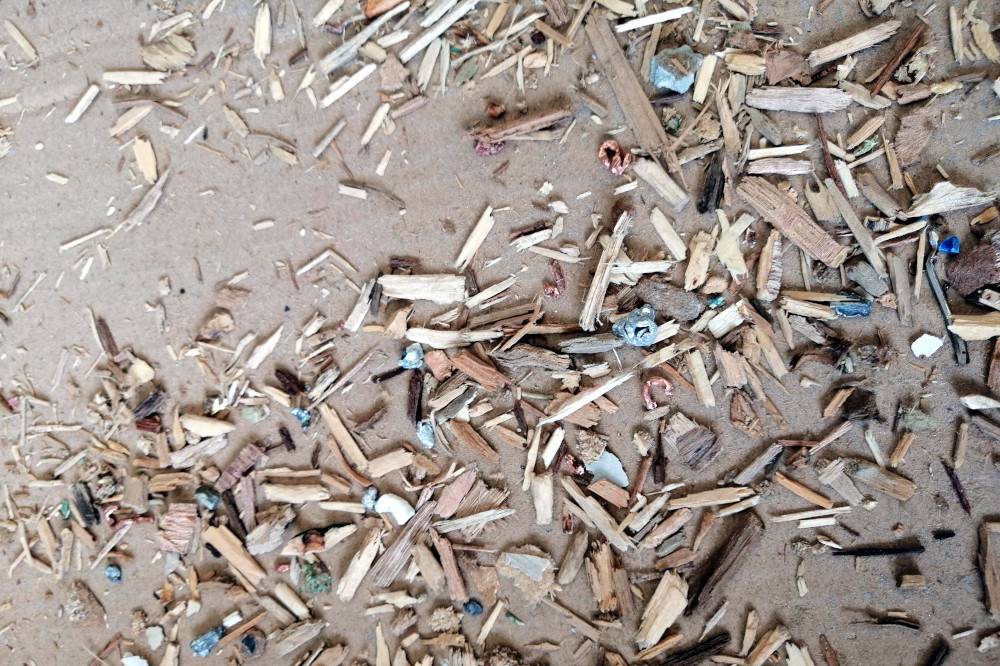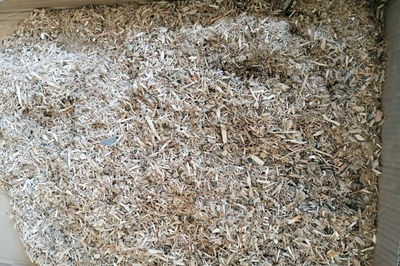30. 11. 2023
Separation of non-ferrous metals from wood chips (case study)

Initial status
The customer is engaged in the production of wood chips (the wood is cut and crushed to smaller pieces of 5 - 30 mm). Wood chips often contain non-ferrous metals (copper, aluminum, stainless steel), which are also from 5 mm in size. The customer required the separation of the non-ferrous metals from the wood chips for additional income from their sale.
Problem
It is not possible to separate non-ferrous metals from inert material using a conventional magnetic separator (as that can only remove ferromagnetic particles). However, here you need to separate the non-ferrous (non-magnetic) metals from the wood chips.
The wood chips are transported to the production plant by a screw conveyor.
Solution
 The non-ferrous metals can be separated by special magnetic separators based on eddy currents. These separators are called eddy current separators or non-ferrous metal separators. They consist of a magnetic cylinder (rotor) with very strong magnets, which at high revolutions (when the magnetic poles alternate rapidly) creates a magnetic field that magnetizes even non-ferromagnetic metallic materials for a short term.
The non-ferrous metals can be separated by special magnetic separators based on eddy currents. These separators are called eddy current separators or non-ferrous metal separators. They consist of a magnetic cylinder (rotor) with very strong magnets, which at high revolutions (when the magnetic poles alternate rapidly) creates a magnetic field that magnetizes even non-ferromagnetic metallic materials for a short term.
The magnetic polarity of the particles magnetized in this way is the same as the polarity of the magnetic field created by the separator rotor. Therefore, magnetized materials are repelled and automatically ejected out of the conveyor belt.
There are two main types of eddy current separators:
- Separators with concentric magnetic rotors (ECS-C RAM) - These separators are designed for the separation of larger metal pieces (from 50 mm). They are therefore suitable for the treatment of e. g. municipal waste. The advantage is their lower price and high processing capacity. The rotor comprises 4 magnetic poles.
- Separators with eccentric magnetic rotors (ECS-E BULL) - Thanks to their design, they allow the induction of a strong magnetic field and are thus suitable for the separation of even very small metal particles (from 5 mm).
Since the customer needed to separate non-ferrous metals about 5 mm in size, we chose the ECS-E 500 BULL separator with the eccentric magnetic rotor.
The main advantages of the eddy current separator with the eccentric magnetic rotor are the possibility of separating even very small non-ferrous particles as well as the ability to adjust the rotor position while the separator is running. This allows to continuously change the separator settings in order to achieve the best separation results.
The wood chips are transported by a screw conveyor. A precondition for the successful separation of non-ferrous metals is the uniform distribution of the separated material on the ECS separator belt. To achieve the best possible material distribution, we installed a vibrating feeder in front of the ECS separator.
Benefits of using the eddy current separator ECS-E 500 BULL
By using the ECS separator with the eccentric magnetic rotor, we were able to effectively separate non-ferrous metals from wood chips. The customer is fully satisfied with our solution, as the required purity of the separated non-ferrous metals was achieved.
Applied equipment: Eddy current separator ECS-E 500 BULL
Advantages of the Eddy Current Separator ECS
- Separation of metal particles from 5 mm
- Eccentric rare earth rotor
- Magnetic rotor comprising 12 poles
- Adjustment of the rotor position while the separator is running
- 8 possible positions of the magnetic rotor
- Easy replacement of the rotor shell
- Quick belt change design
- Additional splitter
- Working widths from 500 to 2 000 mm
